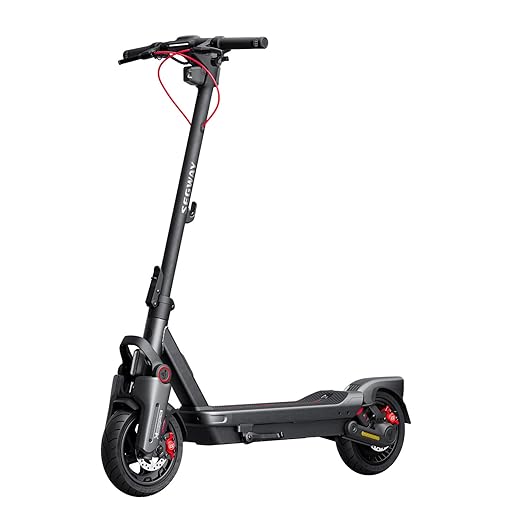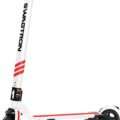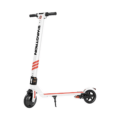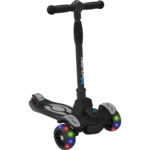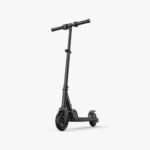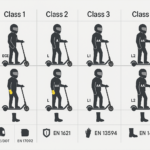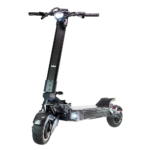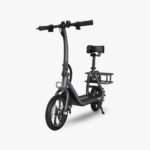- Home
- Scooters
- Compare Scooters
- Segway Ninebot MAX G3 vs MAX G2: The Complete Comparison
Segway Ninebot MAX G3 vs MAX G2: The Complete Comparison
Key Takeaways
- The Segway Ninebot MAX G3 offers greater power, speed, and range compared to the MAX G2, making it ideal for long commutes and hilly terrains.
- MAX G3 features improved battery capacity, dual hydraulic suspension, and higher IPX weather rating, enhancing comfort and durability.
- For city commuting at lower speeds, the MAX G2 provides a calmer ride, convenient features, and easier handling.
- Both scooters have their unique pros and cons: choose the G3 for performance and handling, or the G2 for practicality and budget-friendliness.
- Consider personal needs: G3 suits experienced riders seeking speed, while G2 is great for beginners and everyday use.
Table of contents
- At a Glance (Quick Verdict)
- Key Specs Comparison (Table)
- What Changed from MAX G2 to MAX G3?
- Performance & Ride Feel
- Range & Battery
- Charging & Power Management
- Portability & Storage
- Safety, Durability & Weather
- Smart Features & App Experience
- Maintenance & Ownership
- Which One Is Right for You?
- Pros and Cons
- Frequently Asked Questions
- Final Verdict
- Comparison Ratings (1–10)
- Price
Trying to choose between the Segway Ninebot MAX G3 and the MAX G2? You’re in good company. Both are long-range, commuter-friendly scooters that have a solid track record. Still, they’re not identical. Below, I’ll walk you through what actually changed, how each one feels on the road, and which model fits your daily routine best.
At a Glance (Quick Verdict)
- Commuters: Grab the MAX G2 if you want calmer top speed, an easygoing ride, and a slightly lighter feel.
- Range seekers: Go MAX G3 for the longest rated range in the MAX line and better high-speed poise.
- Hills & heavier riders: MAX G3—more power on tap makes climbs less dramatic.
- Best value: If 28 mph isn’t a must, the MAX G2 is still a super practical, budget-friendlier pick.
Key Specs Comparison (Table)
Units show U.S. first, metric in parentheses.
| Spec | MAX G3 | MAX G2 |
|---|---|---|
| Top speed | 28 mph (45 km/h) | 22 mph (35 km/h) via app unlock; 20 mph (32 km/h) default |
| Rated range (ideal conditions) | up to 50 mi (80 km) | up to 43 mi (70 km) |
| Typical/real-world range | Not officially specified | 25–28 mi (40–45 km) at higher speeds (official notes) |
| Battery capacity / voltage | 597 Wh / Voltage not officially specified | 551 Wh / 36 V |
| Motor (rated / peak) | 850 W / 2,000 W | 450 W / 1,000 W |
| Charger / charge time | ~3.5 h (or ~2.5 h with dual chargers) | Built-in charger; ~5 h |
| Weight | ~54.2 lb (24.6 kg) | ~53.5 lb (24.25 kg) |
| Max load | 286 lb (130 kg) | 265 lb (120 kg) |
| Tires | 11-in tubeless, self-sealing | 10-in tubeless, self-sealing |
| Brakes | Front & rear disc + electronic regen | Front drum + electronic regen |
| Water resistance | IPX6 | IPX5 |
| Dimensions (unfolded) | Not officially specified | 47.6 × 22.4 × 49.8 in (1210 × 570 × 1264 mm) |
| Dimensions (folded) | Not officially specified | 47.6 × 22.4 × 23.8 in (1210 × 570 × 605 mm) |
| Handlebar height | Not officially specified | Not officially specified |
| Climbing grade | up to 30% | up to 22% |
| Lighting & signals | Front/rear lights, turn indicators | Front/rear lights, front & rear indicators |
| Frame/build | All-aluminum alloy | Not officially specified |
| App features (examples) | TFT display w/ navigation, AirLock, Apple Find My, TCS, BMS 2.0 | App speed unlock, Apple Find My, TCS, RideyLong, built-in charger readouts |
What Changed from MAX G2 to MAX G3?
- Power & speed: The G3 steps up to 28 mph and 850 W nominal / 2,000 W peak. The G2 tops out at 22 mph with 450 W / 1,000 W. You feel this right away.
- Battery & range: The G3 bumps to ~597 Wh and adds efficiency tweaks (SegRange™). The G2 runs 551 Wh. Hence the jump from up to 43 mi (G2) to up to 50 mi (G3).
- Ride hardware: G3 uses dual hydraulic suspension (front + rear) and front + rear disc brakes with regen. G2 pairs front hydraulic + rear spring with a front drum + regen setup.
- Wheels & rubber: G3 moves to 11-inch self-sealing tires for calmer high-speed manners; G2 keeps 10-inch tires that are still great around town.
- Weather rating: IP rating rises from IPX5 (G2) to IPX6 (G3).
- Payload & frame: G3 supports 286 lb (130 kg) and advertises an all-aluminum alloy frame. G2 is rated to 265 lb (120 kg).
- Interface & smarts: G3 adds a TFT screen with on-screen nav, AirLock Bluetooth unlock, and BMS 2.0. Both offer app control, TCS, and Apple Find My.
Performance & Ride Feel
The MAX G3 is the one that surges. It pulls off the line with more confidence and keeps its composure when you’re cruising faster, which is honestly where the bigger tires and dual discs start to shine. On hills, it doesn’t bog down as much, and it recovers speed quickly once the grade eases. Meanwhile, those 11-inch tires smooth out seams and potholes so the bar doesn’t twitch when the road gets ugly.
The MAX G2 is your calmer, city-friendly buddy. It accelerates in a measured way—enough to keep up with bike-lane flow but not so much that you’re white-knuckling it. It feels a hair lighter and a bit more compact, which helps when you’re weaving around racks or through narrow hallways. The front hydraulic + rear spring works fine for chip-seal and daily bumps, and the drum + regen braking is super low-maintenance (though, sure, it doesn’t bite like dual discs in a panic stop).
Range & Battery
On paper, the G3 promises up to 50 mi (80 km) and pairs that with a ~597 Wh pack and some efficiency magic under the hood. The G2 lists up to 43 mi (70 km) from 551 Wh. Real-world range? It depends—speed, rider weight, hills, wind, temps, tire pressure… all the usual suspects. Cruise faster and your range drops; chill in Eco mode and it goes the other way. Regen helps on rolling routes, but it’s not a cheat code—think “range stabilizer,” not “range extender.”
Charging & Power Management
Both are easy to live with. The G2 has a built-in charger, which is surprisingly nice—you just need a cable—so a full charge is around 5 hours from low. The G3 claims about 3.5 hours, or ~2.5 hours if you use dual chargers. Either way, charge on your schedule, not the scooter’s. Usual battery care applies: let it dry before charging, don’t fast-charge when it’s freezing, and avoid storing it full for weeks.
Portability & Storage
Neither is a feather. The G3 is about 54.2 lb, the G2 about 53.5 lb. Rolling into elevators is easy; carrying them upstairs every day is… a workout. If you’re hauling often, the G2’s barely lower weight and smaller tire diameter make stair work slightly less annoying. Both fold neatly; the G2 has official folded/unfolded dimensions published, which helps if you’re measuring for a trunk. Wall hooks and low racks are your friends in tight apartments.
Safety, Durability & Weather
The G3 upgrades to IPX6, which is a bit more reassuring in rain; the G2 is IPX5, still fine for splashes and light showers. Either way, avoid deep puddles, wipe down after wet rides, and don’t charge while it’s damp. For stopping, dual discs on the G3 feel strong and predictable, and the larger tires add stability on cracked pavement. Both run self-sealing tubeless tires, which helps with tiny punctures, though it’s not invincibility mode.
As for build, the G3 leans into that all-aluminum alloy story and higher payload. The G2 is already proven for daily commuting. In short, pick your poison: extra margin for speed (G3) or steady-Eddie simplicity (G2).
Smart Features & App Experience
Segway’s app is mature at this point. The MAX G2 supports Apple Find My, TCS, speed unlock via the app, and the usual dashboards. The MAX G3 takes it a notch up with a TFT display that can show navigation guidance, plus AirLock Bluetooth unlocking and an updated BMS 2.0. Firmware updates, mode switching, basic diagnostics—yep, both have that.
Maintenance & Ownership
Keep the basics tight and you’ll be fine. Aim for the recommended tire pressures (G2 lists 42–48 psi; check the G3 manual for its exact window). Give fasteners a monthly once-over. Squeeze the brakes weekly to make sure bite and feel are consistent. The G3’s dual discs may need pad attention sooner if you ride hard; the G2’s drum + regen setup is wonderfully hands-off, though cable tension still deserves a peek now and then. For storage, room temperature is ideal, and if you’re not riding for a while, park it around mid-charge.
Which One Is Right for You?
- Daily city commuting (15–20 mph lanes): MAX G2. It’s mellow, efficient, and less stressful in crowds.
- Long, open suburban routes: MAX G3. More speed and power make cruising feel easy and relaxed.
- Hilly areas / heavier riders: MAX G3. Extra torque and bigger tires keep momentum on climbs.
- Mixed weather: MAX G3. The IPX6 rating gives you a little more breathing room.
- First-timers: MAX G2. Softer acceleration and lower top speed mean a gentler learning curve.
- Experienced riders upgrading: MAX G3. Dual discs, TFT, and stability at speed feel like a real step up.
Pros and Cons
MAX G3
Pros
- Noticeably quicker with stronger hill pull.
- Dual hydraulic suspension + dual discs = confidence.
- 11-inch self-sealing tires feel planted at speed.
- Higher payload and IPX6 weather rating.
- TFT with nav and AirLock are genuinely useful.
Cons
- Heavier to lug upstairs.
- Extra speed means you’ll think more about braking distance and gear.
- Disc pads will wear faster if you ride aggressively.
MAX G2
Pros
- Calm, predictable acceleration; great for city flow.
- Built-in charger and ~5-hour full charge are super convenient.
- Drum + regen braking is low-maintenance.
- Solid real-world range for urban loops.
- Slightly easier to wrangle in tight spaces.
Cons
- Lower peak speed and power ceiling than G3.
- IPX5 gives you a bit less weather margin.
- Drum front brake can’t match dual-disc bite.
Frequently Asked Questions
Is 28 mph on the G3 too fast for commuting?
Depends on your route and rules. The scooter feels stable at pace thanks to the bigger tires and dual discs, but yeah—match your speed to conditions.
What range should I really expect?
It varies. The G3 is rated up to 50 mi, the G2 up to 43 mi, but speed, temp, rider weight, and hills all matter. Go faster and you’ll get less. Ease off and you’ll get more.
Do both have turn signals?
Yes—both models include turn indicators. Still, it’s smart to hand-signal when it’s safe, just for clarity.
Can I ride in the rain?
Light rain, sure—be careful. The G3 is IPX6, the G2 IPX5. Avoid puddles, slow down, dry the scooter after, and never charge it while wet.
Do I need special tools?
Nope. A decent floor pump, a pressure gauge, and basic hex keys cover most of what you’ll do at home.
Final Verdict
If you ride fast, far, or uphill, the MAX G3 is the easy pick. It’s stronger, steadier at speed, and better equipped for bad pavement and sudden stops. Plus, the TFT and AirLock features really do improve the day-to-day. If your commute is dense, stop-and-go, and speed-limited, the MAX G2 is fantastic—lighter to handle, easy to charge anywhere, and super predictable. Bottom line: choose G3 for extra headroom and future-proofing; choose G2 for simple, reliable, everyday transport.
Comparison Ratings (1–10)
MAX G3
- Performance: 9/10 — more speed and hill muscle.
- Range: 9/10 — bigger pack + efficiency tuning.
- Ride comfort: 9/10 — dual suspension + 11-inch tires.
- Braking & safety: 9/10 — dual discs, IPX6.
- Portability: 7/10 — 54 lb is… not light.
- Features/App: 9/10 — TFT nav, AirLock, Find My, TCS.
- Build quality: 9/10 — alloy frame, higher payload.
- Maintenance: 8/10 — pads to watch, otherwise easy.
MAX G2
- Performance: 7.5/10 — city-ready, but capped.
- Range: 8/10 — up to 43 mi rated; steady in real use.
- Ride comfort: 8/10 — front hydraulic + rear spring.
- Braking & safety: 7.5/10 — drum + regen, IPX5.
- Portability: 7.5/10 — slightly easier to handle.
- Features/App: 8/10 — Find My, TCS, speed unlock.
- Build quality: 8/10 — proven platform; lower payload.
- Maintenance: 8.5/10 — very low fuss day-to-day.
Price
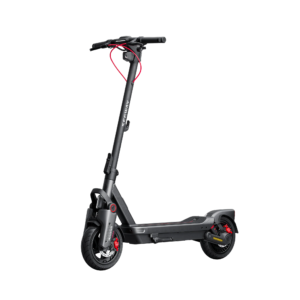 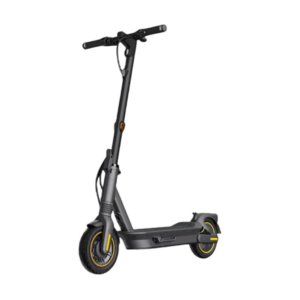 | |
| Price | |
| Our Rating | |
| Brand | SegwaySegway |
| Category | Electric ScootersElectric Scooters |
General
| Model The Model specifies the exact version or name of the scooter. It helps identify its unique design, features, and specifications within the manufacturer’s product line. Knowing the model makes it easier to compare options, find compatible accessories, or look up support information. | Ninebot MAX G3Ninebot MAX G2 |
| Brand The Brand identifies the manufacturer or company that designs and produces the scooter. A trusted brand is a sign of quality, reliability, and good customer support. Well-known brands often have higher standards for safety, performance, and after-sales service, giving you more confidence in your purchase. | SegwaySegway |
| Release Date The Release Date indicates when the scooter model was officially launched on the market. This helps you know how current the design, technology, and features are. A newer release date often means updated components, improved performance, and the latest safety or smart features. | 01 January 202401 January 2023 |
| Recommended Age Recommended Age indicates the minimum age range that the scooter is designed for, based on safety, size, and ease of use. Following the recommended age helps ensure that riders can handle the scooter’s speed, weight, and controls comfortably and safely. Always check local laws and use protective gear, especially for younger riders. | Teens & Adults (14+)14+ |
Performance & Power
| Motor Power (Wattage) What it means: The motor power, measured in watts (W), shows how strong the scooter’s electric motor is. Why it matters: Higher wattage usually means better acceleration, more torque, and improved performance on hills or rough terrain. For example, a 250W motor is good for flat city roads and light riders, while a 500W or 1000W motor provides more power for faster speeds or climbing steep inclines. | 850 W nominal, 2,000 W peak450 W nominal, 900–1000 W peak |
| Top Speed The Top Speed indicates the maximum speed that the scooter can reach under optimal conditions. It’s usually measured on level ground with a fully charged battery and an average rider weight. A higher top speed allows you to travel longer distances faster, but always ensure you ride within legal speed limits and your personal comfort zone for safety. | Up to 28 mph (≈45 km/h)Up to 22 mph (25 km/h) |
| Battery Capacity Battery Capacity refers to the total amount of energy the scooter’s battery can store, usually measured in ampere-hours (Ah) or watt-hours (Wh). A higher battery capacity means you can ride longer distances on a single charge, reducing the need for frequent recharging. Keep in mind that actual range can vary depending on rider weight, terrain, speed, and weather conditions. | 597 Wh (46.8 V)36 V, 15.3 Ah (551 Wh) |
| Estimated Range per Charge The Estimated Range per Charge indicates the average distance the scooter can travel on a single full battery charge. This range is calculated under optimal conditions, such as flat terrain, moderate speed, and average rider weight. Real-world range may vary depending on riding style, terrain, weather, and load. A longer range means fewer recharges and greater freedom for longer trips. | Up to 50 miles (≈80 km) using SegRange™ techUp to 43 miles (70 km theoretical, ~25 miles at max speed) |
| Hill Climb Ability Hill Climb Ability describes the maximum incline or slope that the scooter can handle while maintaining stable performance. It’s typically expressed as a percentage or in degrees. A higher hill climb rating means the scooter can tackle steeper hills without losing too much speed or power. Actual climbing performance may vary based on rider weight, battery charge, and terrain conditions. | Handles inclines up to 30%Up to 22% incline |
| Drive System The Drive System refers to how power from the motor is delivered to the wheels. Electric scooters typically use either a hub motor (directly integrated into the wheel) or a chain/belt drive system. A high-quality drive system ensures smooth acceleration, efficient power transfer, and low maintenance. The choice of drive system affects performance, noise level, and overall ride experience. | Rear wheel hub motorRear-wheel hub motor |
Charging & Electrical
| Charging Time Charging Time indicates how long it takes to fully recharge the scooter’s battery from empty to 100% using the standard charger provided. Faster charging means less downtime and more time on the road. Actual charging time may vary slightly depending on battery capacity, charger output, and environmental conditions. | ≈ 3.5 hours with standard charger; ≈ 2.5 hours using optional dual input chargerApprox. 5–6 hours |
| Battery Type Battery Type refers to the specific technology used in the scooter’s battery, which affects performance, lifespan, weight, and charging time. Most modern electric scooters use high-quality lithium-ion (Li-ion) batteries because they offer a good balance of energy density, durability, and low maintenance. A reliable battery type ensures consistent power delivery and longer riding ranges. | Lithium-ion with Segway BMS and fast charging capabilityLithium-ion with smart BMS |
| Removable Battery A Removable Battery means the battery pack can be easily detached from the scooter for convenient charging and replacement. This feature allows you to charge the battery separately, swap it with a spare for extended range, or securely store it indoors in extreme weather. Removable batteries add flexibility and make it easier to keep your scooter powered up wherever you are. | YesNo |
| Regenerative Braking Regenerative Braking is an energy-saving feature that converts some of the energy normally lost during braking back into battery power. When you slow down or brake, the motor works in reverse to generate electricity, which helps extend the scooter’s range and improves overall efficiency. This system also reduces wear on traditional brake components, leading to lower maintenance over time. | YesYes |
| Lighting Lighting refers to the built-in front and rear lights that enhance visibility and safety when riding in low-light conditions or at night. Good lighting helps you see the road ahead and ensures that other road users can see you. Many scooters include LED headlights, taillights, and sometimes brake lights or side reflectors for added safety and compliance with local traffic regulations. | Integrated front/rear LED lights plus side illumination and handlebar turn signalsFront LED headlight, rear LED taillight, integrated turn signals |
Build & Dimensions
| Scooter Weight Scooter Weight refers to the total weight of the scooter when fully assembled, including the battery. This affects how easy it is to carry, lift, and store the scooter when not in use. A lighter scooter is more portable and convenient for commuting, especially if you need to carry it upstairs or onto public transport. Keep in mind that a sturdy frame and quality components may add to the weight but also contribute to better durability and ride stability. | Approx. 24.3 kg (≈54 lb)Approx. 53.5 lb (24.3 kg) |
| Maximum Rider Weight Maximum Rider Weight indicates the highest rider weight that the scooter is designed to safely support while maintaining optimal performance and stability. Staying within this limit helps ensure reliable acceleration, braking, and climbing ability, and it protects the frame, suspension, and motor from excessive strain. Exceeding the recommended limit may reduce performance and increase wear on components. | Up to 130 kg (≈286 lb)265 lb (120 kg) |
| Deck Size Deck Size refers to the dimensions of the scooter’s standing platform. A wider and longer deck provides more foot space, allowing you to stand comfortably and adjust your stance while riding. A well-sized deck improves balance and stability, especially on longer rides or at higher speeds. Compact decks, on the other hand, help keep the scooter lightweight and portable. | Wide anti-slip platform (~51 × 48 inches footprint)180 mm wide footboard, non-slip finish |
| Handlebar Height Handlebar Height refers to the distance from the deck to the handlebars, which affects your riding posture and comfort. An appropriate handlebar height helps you maintain good balance, reduces strain on your back and arms, and makes steering more comfortable. Some scooters have adjustable handlebars to fit riders of different heights, while others have a fixed height for a streamlined design. | Fixed standard height (~40–46 inches)Approx. 40.9″ from deck |
| Folding Mechanism The Folding Mechanism describes how easily and securely the scooter can be folded for carrying and storage. A well-designed folding system lets you quickly collapse the scooter into a compact size, making it convenient to transport on public transit, store under a desk, or fit into a car trunk. Look for sturdy latches and safety locks to ensure the scooter stays firmly in place when folded or unfolded. | YesYes |
| Dimensions Folded Dimensions indicate the size of the scooter when it’s fully folded. This measurement shows how much space the scooter will take up when stored or carried, making it easier to check if it will fit in your car trunk, under a desk, or in a closet. Compact folded dimensions are ideal for commuters who need to bring their scooter on public transport or store it in tight spaces. | Compact form ideal for storage1210 × 570 × 605 mm |
| Material Material refers to the primary construction materials used for the scooter’s frame and key components. High-quality materials like aircraft-grade aluminum, reinforced steel, or durable composites provide strength, stability, and a lighter overall weight. A sturdy material ensures the scooter can handle daily wear and tear while maintaining safety and performance. | Aluminum alloy frame, tested for durability up to 20,000 km and 500,000 suspension cyclesHigh‑strength steel frame |
Safety & Control
| Brake Type(s) Brake Type(s) describe the braking systems the scooter uses to help you slow down or stop safely. Common brake types include mechanical brakes (like drum or disc brakes), electronic brakes, and foot brakes. Many scooters combine multiple braking systems for added safety and shorter stopping distances. The type and quality of brakes affect your control, especially when riding at higher speeds or on slopes. | Front and rear hydraulic disc brakes with E‑ABS systemFront drum brake + rear electronic brake (E‑ABS) |
| Suspension Suspension refers to the system that absorbs shocks and vibrations while riding, providing a smoother and more comfortable ride over uneven or rough surfaces. Scooters may have front suspension, rear suspension, or dual suspension for better shock absorption and stability. Good suspension helps reduce rider fatigue and improves control, especially when riding on bumpy roads or off-road paths. | Adjustable dual hydraulic front and rear suspensionHydraulic front suspension and rear dual spring suspension |
| Tire Type Tire Type refers to the kind of tires the scooter uses, which directly affects ride comfort, traction, and maintenance. Common types include solid (airless) tires, pneumatic (air-filled) tires, or hybrid options. Pneumatic tires offer better shock absorption and a smoother ride on rough surfaces, while solid tires are puncture-proof and require less upkeep. The right tire type helps ensure safe handling and a comfortable ride in different conditions. | 11″ pneumatic self-sealing tubeless tyres (with jelly layer)10″ self-sealing tubeless pneumatic tires with jelly layer |
| Tire Size Tire Size indicates the diameter and width of the scooter’s tires, which affect ride comfort, stability, and how well the scooter handles different terrains. Larger tires generally offer better shock absorption and a smoother ride over bumps and rough surfaces, while smaller tires keep the scooter lighter and more portable. Choosing the right tire size helps ensure a balance between agility and comfort. | 11 × 2.5 inches10 inches front & rear |
| Kickstand The Kickstand is a built-in stand that allows you to park your scooter upright when it’s not in use. A sturdy kickstand keeps the scooter stable and prevents it from tipping over, protecting it from scratches and damage. It also makes storing and accessing your scooter more convenient, whether you’re at home, work, or on the go. | YesYes |
| Water Resistance Rating Water Resistance Rating indicates how well the scooter is protected against water and moisture, usually shown as an IP (Ingress Protection) rating. This rating helps you understand whether the scooter can handle light rain, splashes, or wet roads without damage. While most scooters are not fully waterproof, a good water resistance rating adds peace of mind when riding in changing weather conditions. Always avoid deep puddles or submerging the scooter to protect its electrical components. | IPX6 for body, IPX7-rated battery packIPX5 for scooter body; IPX7 battery pack |
Features & Extras
| Display/Console The Display (or Console) shows important real-time information about your ride, helping you monitor your scooter’s status at a glance. Typical displays show speed, battery level, distance traveled, and riding mode. Some models also include additional features like Bluetooth connectivity, app integration, or backlighting for better visibility at night. A clear and easy-to-read display enhances safety and convenience on every trip. | 2.4″ Smart TFT full-color screen showing speed, battery, trip info, navigation, caller IDFull-color LED dashboard (speed, battery, modes, turn indicator, connectivity) |
| Ride Modes Ride Modes refer to the different speed and power settings you can choose to match your riding style or road conditions. Common modes include eco for maximum range and energy efficiency, standard for everyday balance, and sport or turbo for higher speed and stronger acceleration. Switching between ride modes allows you to customize performance, conserve battery, and ride safely in various environments. | Eco, Standard, Sport, plus Walk & Park modes; boost acceleration mode available on commandEco, Drive, Sport, S+; plus Walk & Park modes |
| Smart App Connectivity Smart App Connectivity lets you pair your scooter with a dedicated mobile app via Bluetooth. Using the app, you can monitor real-time ride stats like speed, battery level, and range, adjust settings such as ride modes or cruise control, lock the scooter for added security, and sometimes receive firmware updates. This feature adds convenience and allows you to personalize your riding experience right from your smartphone. | YesYes |
| Anti-Theft System The Anti-Theft System helps protect your scooter from unauthorized use or theft. This feature can include built-in alarms, electronic motor locks, GPS tracking, or remote locking through a mobile app. A good anti-theft system provides peace of mind when parking your scooter in public spaces, adding an extra layer of security to safeguard your investment. | App-enabled digital lock and Apple Find My support for rider peace of mindApp‑activated horn alarm, Find My feature |
| Cruise Control Cruise Control allows you to maintain a steady speed without continuously holding the throttle. This feature makes longer rides more comfortable by reducing hand fatigue and providing a smoother, more relaxed riding experience — especially on flat, open roads or bike lanes. For safety, cruise control can usually be easily activated or deactivated while riding. | YesYes |
| Accessories Included Accessories Included lists the additional items that come with the scooter to enhance your riding experience and convenience. Common accessories may include a charger, kickstand, bell, lights, phone holder, or carrying strap. These extras add value by making your scooter safer, easier to use, and ready to ride straight out of the box. | Charger, user manual, reflectors; optional fast charger accessory availablePress-bell, app connectivity, reflectors, charger, user manual |
Warranty & Compliance
| Warranty Period The Warranty Period indicates how long the manufacturer guarantees the scooter against defects in materials and workmanship under normal use. A good warranty provides peace of mind, showing the brand’s confidence in its product quality. Always check what parts are covered, such as the frame, battery, and motor, and follow the maintenance guidelines to keep your warranty valid. | Typically 12 months (varies by region)Typically 24 months |
| Certifications Certifications confirm that the scooter meets specific safety, quality, and environmental standards set by recognized organizations or regulatory bodies. Common certifications may include CE, RoHS, UL, or other local compliance marks, depending on your region. These certifications ensure that the scooter is manufactured to high standards and is safe and legal to use in your country. | UL 2272 certified; CE, RoHS, IPX6/IPX7 compliantUL 2272 certified by TÜV Rheinland; E-MARK reflectors compliant with EU standards |
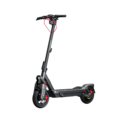  |


